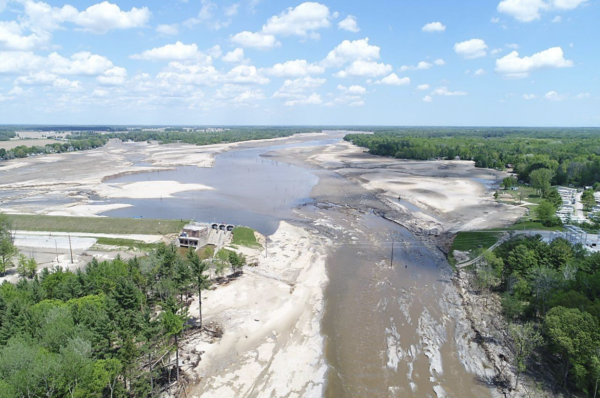America’s Aging Infrastructure: How Neglect Increases Flood Risk
How Neglect Increases Flood Risk
You don’t have to live near a body of water to be at risk for flooding. Sometimes the very structures designed to protect us from floods can be the source of concern.
A striking number of America’s dams, pipes, and other drainage systems haven’t been updated in decades, which makes them more vulnerable under the strain of intensifying weather. Troublingly, the American Society of Civil Engineers (ASCE) gave the nation’s stormwater infrastructure a D grade for 2021.
The Biden Administration recently announced its massive infrastructure plan, which promises to upgrade deteriorating structures across the country. While it remains to be seen how the plan will play out, it hopefully means better flood protection for the thousands of Americans who live downstream.
In the meantime, here’s an overview of how outdated infrastructure contributes to flood risk across the country.
Floods Caused by Dams: Michigan’s Dam Failures Are a Cautionary Tale
In May 2020, as the pandemic roared on, two dams in central Michigan collapsed and sent billions of gallons of water hurtling into nearby communities. More than 10,000 people were forced to evacuate. While thankfully no lives were lost, thousands of properties were submerged in nine feet of water.

The 2020 Edenville dam failure. Source: State of Michigan Department of Environment, Great Lakes, and Energy
Two main factors contributed to the failures:
- Several days of heavy rain caused higher waters in the nearby lakes.
- The two privately owned dams had been cited for many safety violations that warned they couldn’t withstand heavy rains.
Few homeowners who lived near the dams had any idea that they were in danger. Less than 10 percent of the damaged properties had flood insurance, as the areas weren’t classified as high-risk by FEMA’s flood maps.
The catastrophe resulted in over $175 million in damage, exacerbating economic fallout from the pandemic and adding a second crisis for the state to manage. But it has also raised awareness for the threat of infrastructure collapse in Michigan and beyond.
Need a flood safety plan? Head to our Flood Assistance page for guidance on making one for you and your family.
At Least 1,680 Dams in the US Pose a Potential Flood Risk
The 2020 Michigan dam failures may have been an egregious tragedy, but they were by no means an isolated incident.
According to an investigation conducted by the Associated Press, there are 1,688 high-hazard dams rated in poor or unsatisfactory condition as of 2019.
The US Army Corps of Engineers (USACE) has documented 250 dam failures since 2010 – and just one in five of its designated high-hazard dams have emergency plans on file with local officials.
Built originally for flood control, irrigation, water supply, hydropower, recreation, or industrial waste storage, most dams in the US are on average a half-century old. It would take at least $70 billion to modernize the 90,000 dams and surrounding water systems in the country.
One major complication of the project of updating the nation’s dams is that most are privately owned, which makes it difficult to enforce and get funding for improvements. In most states, including Michigan, private dam owners are not required to disclose associated flood risks to people who live within a flood zone, who go unaware of these safety concerns.
And even if dams are in good condition, the increasing frequency of extreme rainfall puts thousands at risk of collapsing under too much water weight.
Flood Maps Must Reflect Infrastructural Vulnerabilities
FEMA flood maps ensure property owners have insurance from financial losses after a flood. That’s why it’s critical that the relevant mapping data is accurate and up-to-date.
Unfortunately, the current information available about dams and storm water infrastructure doesn’t always capture the full extent of the risk. Because so many dams are private property, it often falls on the owners to release risk data to mapping officials – which doesn’t always happen.
Whether you’re a homeowner or a local representative, you can advocate for more public information about infrastructural flood risks in your area.
Dam safety is a shared responsibility, according to FEMA. As Biden’s infrastructure renovation plan takes shape, property owners, state and local officials, and federal organizations can work together to shed light on these flood risks and take action to protect their communities.
Want to get started with a flood insurance policy? Get a quote in seconds.
Know Your Local Man-Made Flood Risks
While much of the conversation around flood risk typically centers on the coasts and hurricanes, in reality, flood risk exists all across the country.
Extreme weather patterns put inland areas at a greater risk of flooding events like rising floodplains and rapid snowmelt, but mother nature isn’t the only cause – our infrastructure is putting us at risk, too.
At National Flood Services, we want to help everyone get the flood protection they need, including those whose flood risks are man-made. Learn more about how we’ve served communities across the country for more than three decades.
Blog Articles
